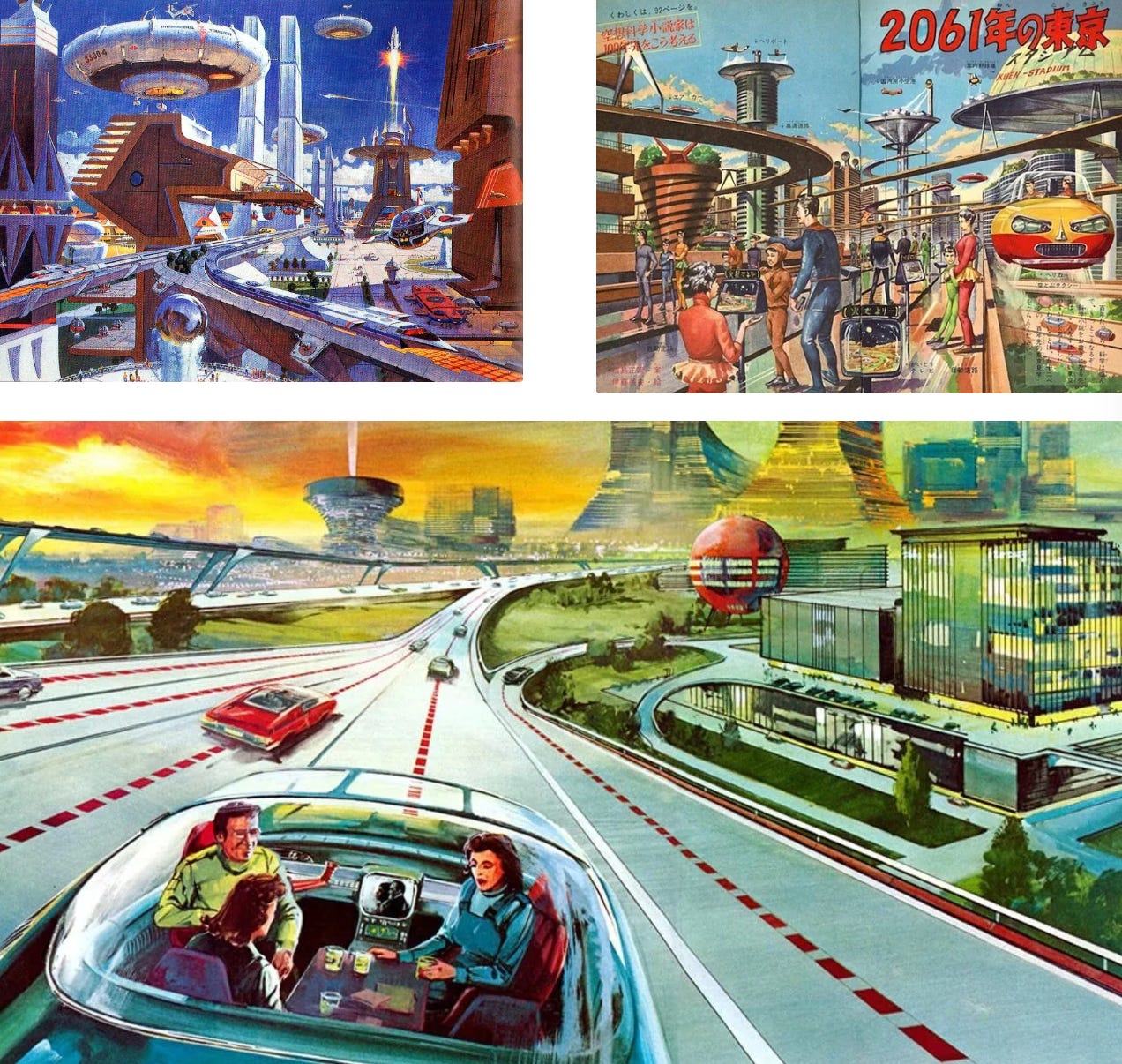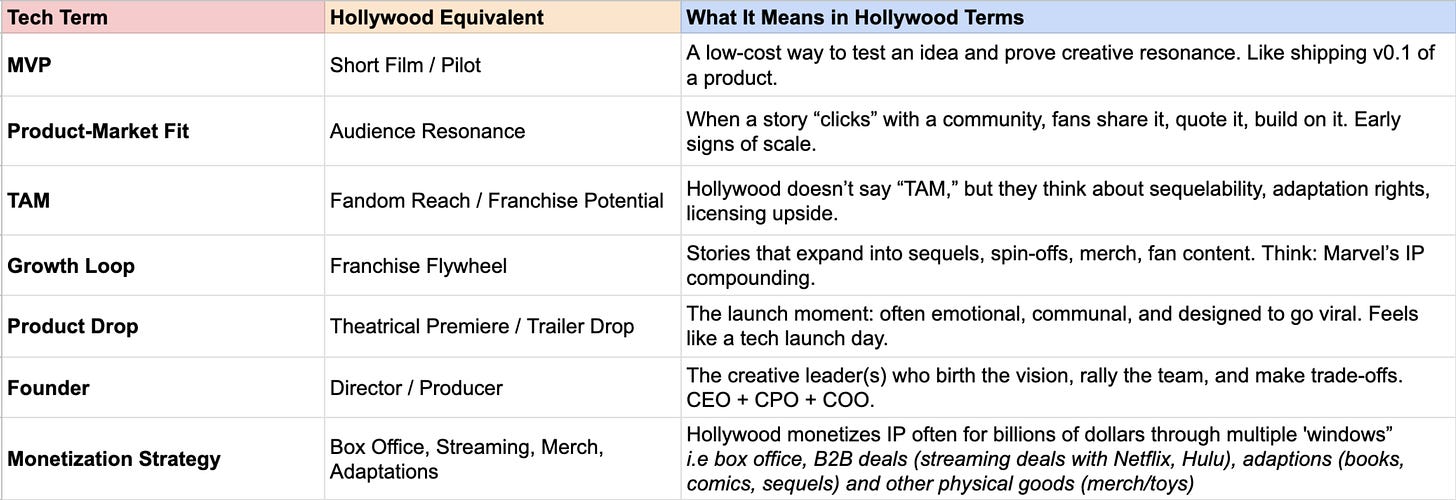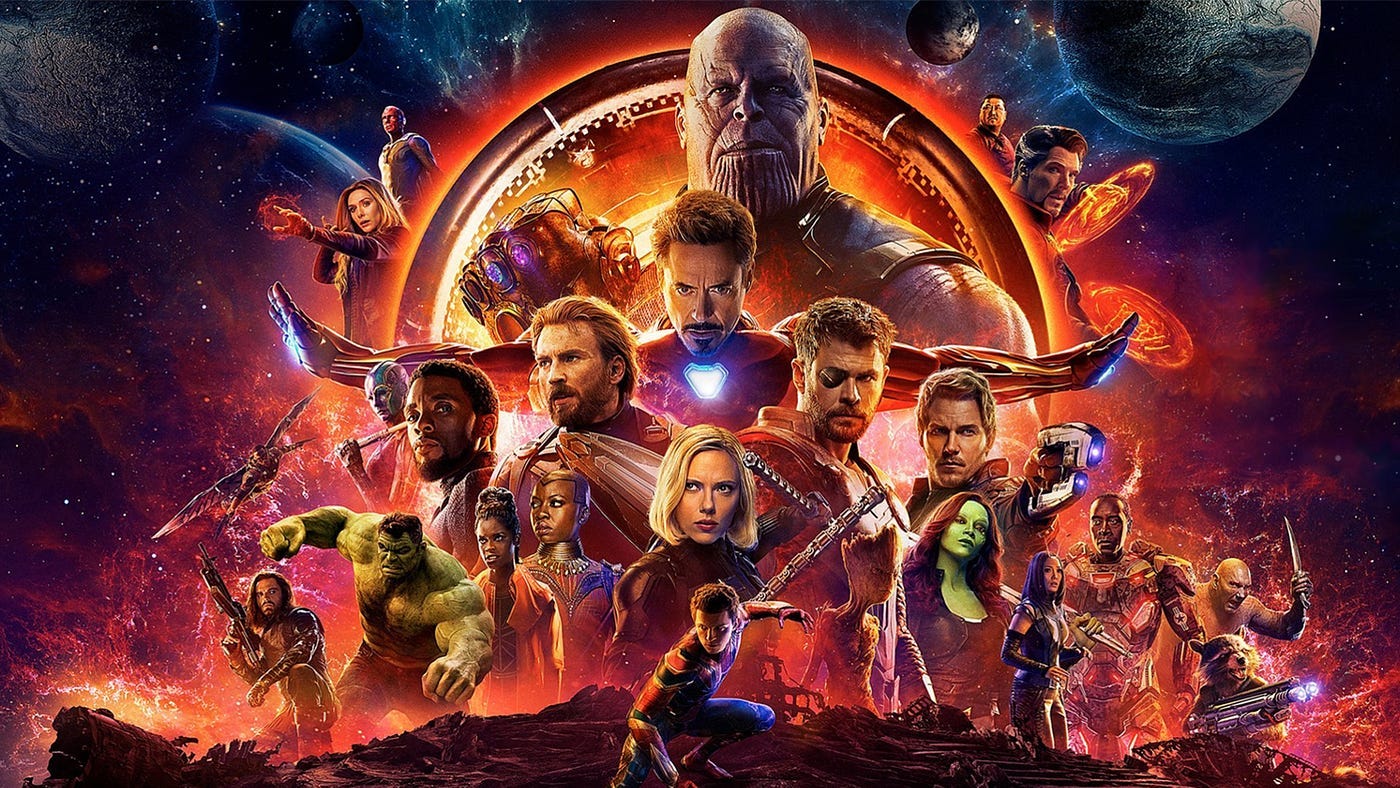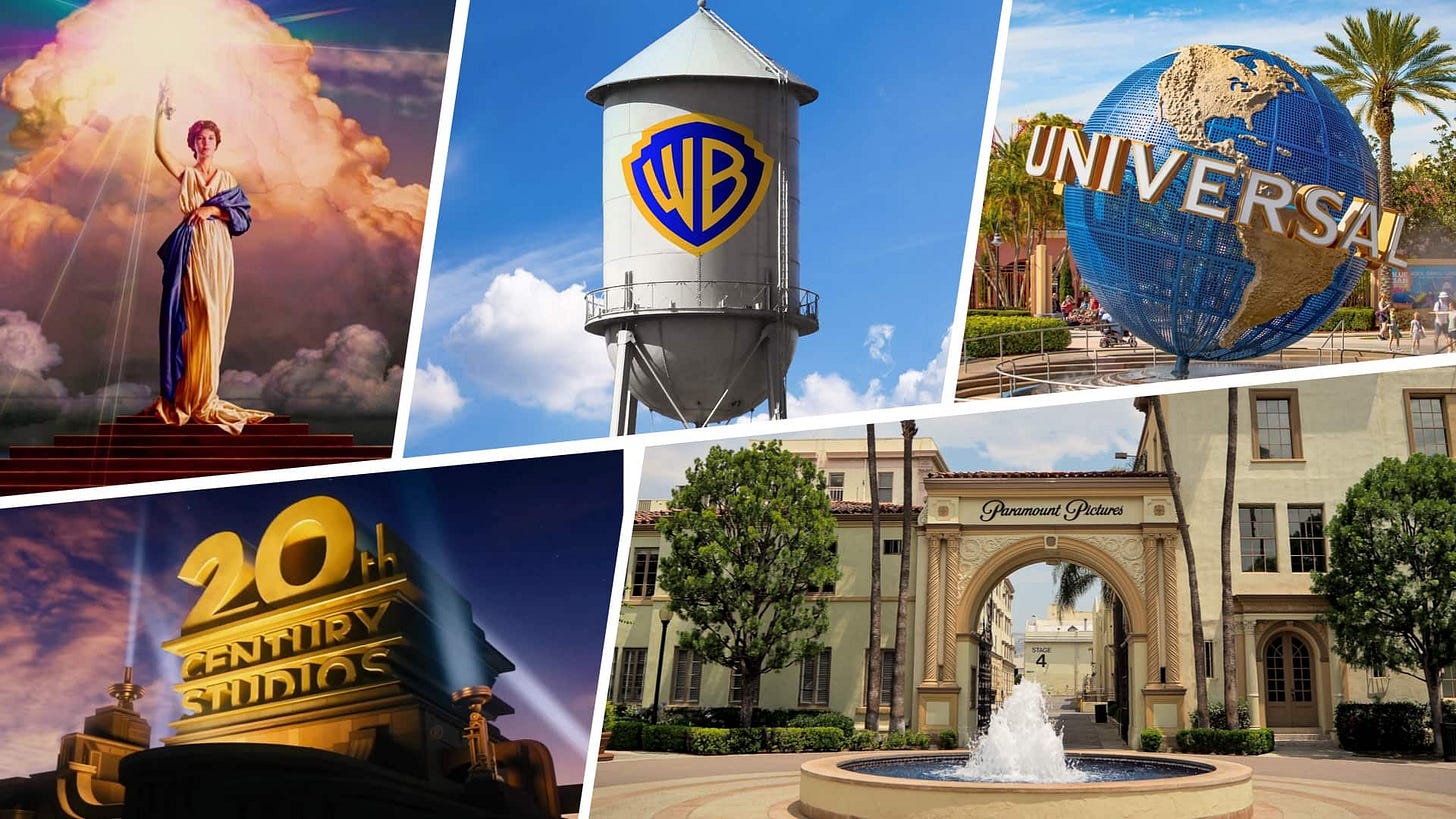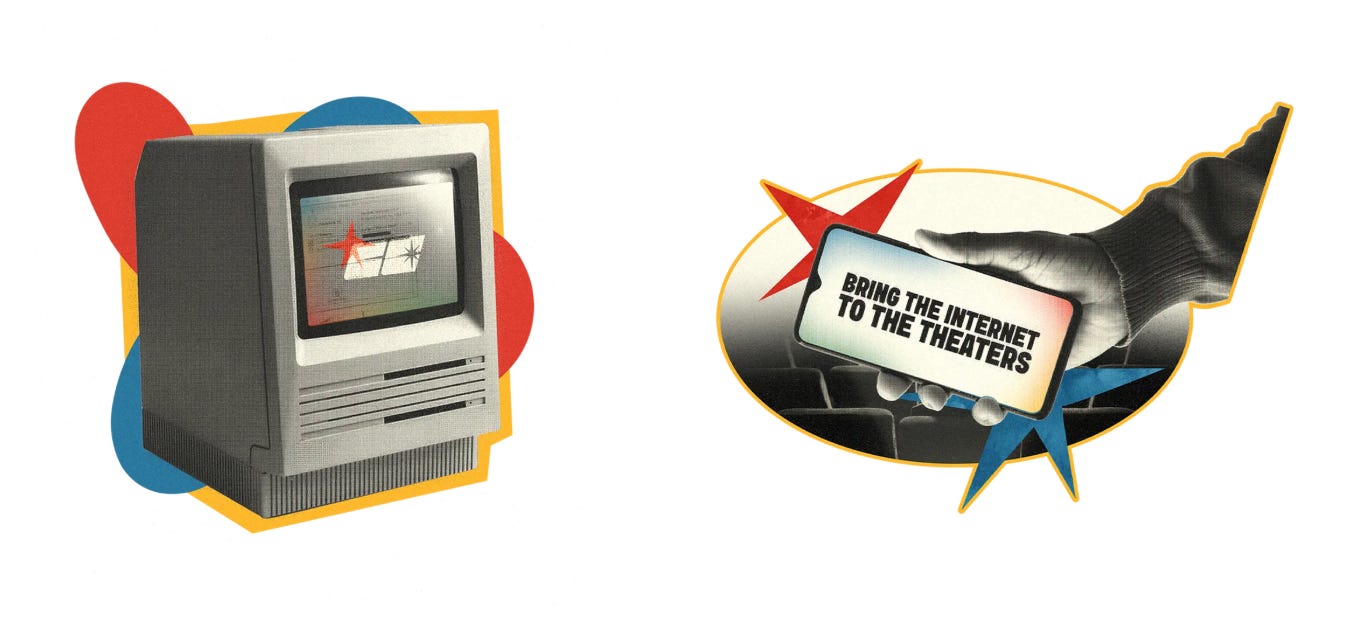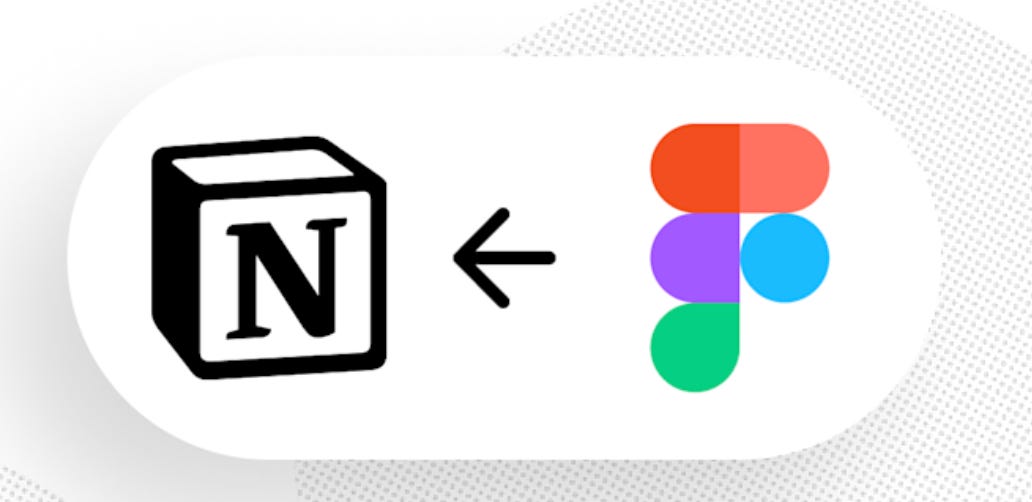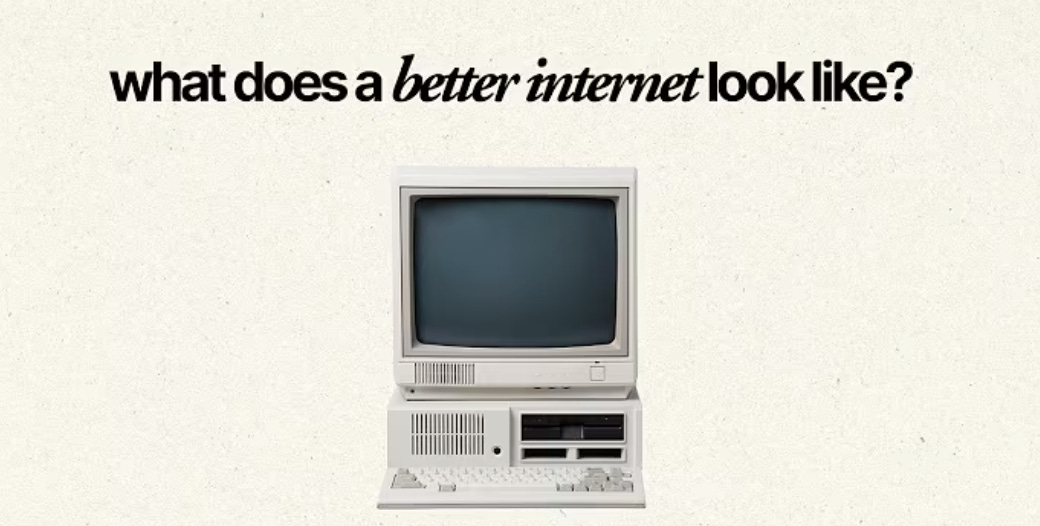The Entire Hollywood System Explained in Tech Terms
(And Why the Next Pixar Will Look More Like a Global Internet Collective)
1. The Future Used To Be Colorful
In the mid-20th century, artists imagined the future with color and conviction. Jetpacks, curved glass, & modular homes. The world ahead was vibrant, collaborative, and full of promise.
That aesthetic had a name: retrofuturism.
But it was more than design. It was a worldview, a belief that technology and art could work hand in hand to build something better.
Somewhere along the way, that optimism fractured.
Big Tech grew up. Hollywood calcified.
Our creative infrastructure got stuck in the past.
And now much of culture fears the future.
But something’s shifting again. Quietly. On the internet.
2. Hollywood in a Nut Shell
Myself & the team at Creator Camp didn’t come up through the studio system.
We’re entirely internet-native. We were raised on YouTube, forged in the creator economy, & are now building at the edge of internet-cinema.
Hollywood is a closed system.
Most people don’t understand how it really works and this is by design.
But over the past year, we’ve cracked it open. We’ve produced films, sold out theaters, and have had major studios approach us for insights.
Before we go deeper, let’s level the playing field.
Here’s Hollywood terminology translated into the language of tech ⤵️
IP is the beating heart of Hollywood’s business model.
Because in film, owning the story means owning the revenue across box office, streaming, licensing, merch, and adaptations.
But here’s what most people don’t realize:
Hollywood is less in the business of original ideas, and more in the business of IP arbitrage.
They option a book, remake an old film, or adapt a comic. They use test screenings to minimize risk. Then they mass-market the final product across theaters, streamers, and licensing deals to make millions (sometimes billions).
It’s a hits-driven model. Volume doesn’t matter. ROI does.
And it’s powered by a handful of gatekeepers (Disney, Paramount, Warner, Lionsgate, etc). They decide what gets made, who gets paid, and who owns the upside.
Studios were built for a world of scarcity.
They had to centralize capital, control distribution, and tightly manage risk. But in a world of abundance, where anyone can publish, build fandoms, and go direct, that model breaks.
That’s why what emerges next won’t come from within the system. It’ll come from someone who rearchitects the stack.
In tech terms: they ship slow, they don’t share equity, and they rely on distribution channels they don’t own.
Two Different Operating Systems
Startups vs Studios
When I say “startup,” I don’t mean a small business.
I mean it in the tech-world sense: an experiment in building systems that scale.
Startups are becoming more like studios (more on that later).
But that doesn’t mean studios are becoming like startups.
Most Hollywood studios were never startups. They are slow to iterate.
They were built to control distribution, not reimagine it.
They are risk managers. Taste filters. Distribution engines.
They make bets & scale what works.
And most importantly, the legacy studios never shared ownership.
That worked when distribution was scarce.
But the internet rewired everything.
Now, the best filmmakers don’t need permission to tell stories.
They’re amassing wide audiences online.
They’re self-financing from their community.
They’re selling tickets, merch, and digital rights.
& they are proving stories at internet speed, before the industry even notices.
Startups Don’t Just Build Products.
They Build Infrastructure
Silicon Valley is great because they think in terms of scale, open-source, & infrastructure.
If you walk through a studio lot today, you’re stepping into an empire built for a different era.
You’ll see payrolls bloated by old ownership structures.
You’ll see executives chasing IP that already has momentum online.
You’ll see films made by committee, not conviction.
It’s not that they don’t care. It’s just more rare to find those that think like builders.
Startups, on the other hand, build from first principles.
They’re lean. They’re fast. They’re user-obsessed.
And most importantly, they create infrastructure that compounds.
Figma didn’t just build a design tool. It restructured how design teams collaborate.
Notion didn’t just replace Docs. It became the OS for internet-native businesses.
These weren’t just founders chasing TAMs. They were creatives disguised as technologists.
And they didn’t build companies. They built canvases.
What they really did was open a portal.
A way for millions of people to participate in the creative economy.
Not through gatekeepers. But through the internet.
What’s coming next is the same thing but for storytelling.
Internet-Native = Tech-Native Thinking
This is the part most people miss.
It’s not just that creators use the internet
It’s that they were raised by it.
Their feedback loop is instant
They understand internet culture
They publish, adapt, and evolve in real time.
They’re more attuned to thinking like product designers than studio executives
They test ideas, respond to feedback, and ship what connects.
They understand momentum.
They’ve already absorbed the logic of bottom-up SaaS, intuitively.
This is why the next great storytellers won’t come from film school.
They’ll come from YouTube, Discord, & Substack
All thats missing is proper infrastructure.
Startups Aren’t Just Software Now.
They’re Studios.
The lines are beginning to blur.
If you look around, the smartest tech companies today don’t just build products, they craft narratives.
And ironically, those are the ones that raise the most money even when the product isn’t fully there yet.
They drop trailers. Tease launches. Build hype like filmmakers.
Because in today’s world, distribution is product.
Markets ebb and flow.
When you’re in a market flooded with options, your ability to tell a compelling story becomes a core differentiator.
Right now, everyone’s looking for someone to make their launch video.
Everyone’s playing the attention game.
The Studio Isn’t Broken Because of Taste.
It’s Broken Because of Incentives -- and Inertia.
Hollywood isn’t failing because it’s uncreative.
It’s failing because it’s structurally misaligned.
Ownership is hoarded at the top.
The average director gets paid once and receives zero equity in the IP they create.
Backend points are a mirage.
Incentives are stacked for gatekeepers, not builders.
Even when good ideas emerge, studios move too slowly to adapt.
They’re bloated by outdated systems.
Compare that to tech:
Would you ever fund a startup where the founder had 0% ownership?
We’re building a new kind of studio.
One that unlocks the internets most powerful stories and shares upside with the people who build them.
One that moves at internet speed, not studio speed.
This Is Bigger Than Hollywood
When you trace it out, not just the stories, but the economics & the ownership model, you realize something wild:
This isn’t just a new studio. It’s a new category.
One where stories are told from the bottom-up.
Where creators are owners, not work-for-hire.
Where films are launched like product drops, and fandoms are formed in real time.
Where the same flywheel that built Shopify stores and SaaS tools… now powers narrative IP.
Legacy Media Is Falling. A New Pixar Is Rising.
In the next five years, Hollywood will be unrecognizable.
Not because AI will replace writers. Not because theaters are dying. But because the internet has quietly taught a new generation how to think like technologists and tell stories like auteurs.
We’re on the edge of a creative renaissance.
But this time, it won’t be led by studios.
It will be led by startups disguised as studios.
By teams that tell stories like Pixar but think and ship like Stripe.
By creators raised on YouTube, Discord, & the internet.
By the filmmaker who presses publish
And if you zoom out, the story becomes clear:
A new generation is rewriting what the future can be.
A new Pixar is emerging. But it won’t look like a building in Emeryville.
It will look like a global, internet-native collective born from community, not capital.


